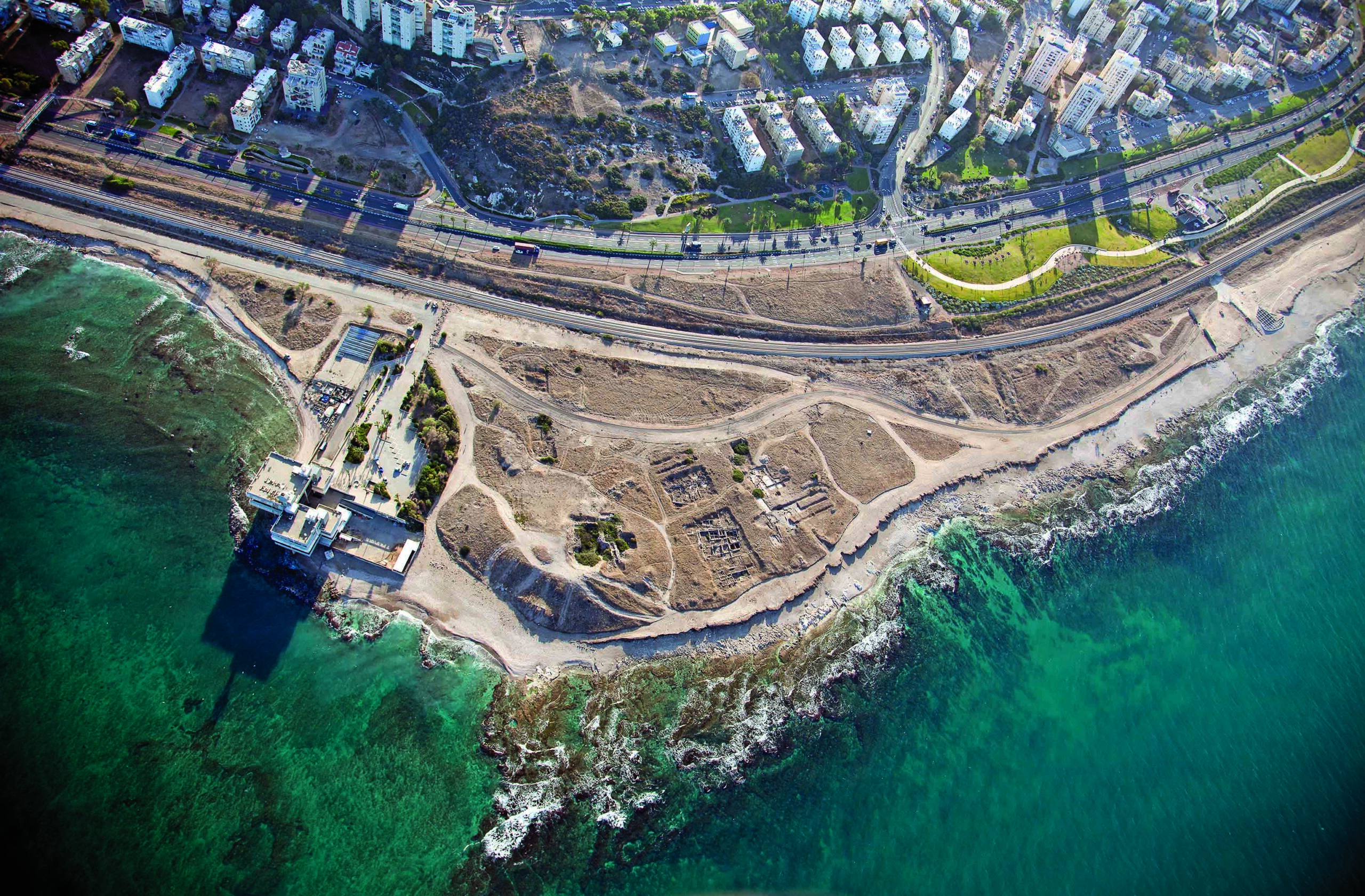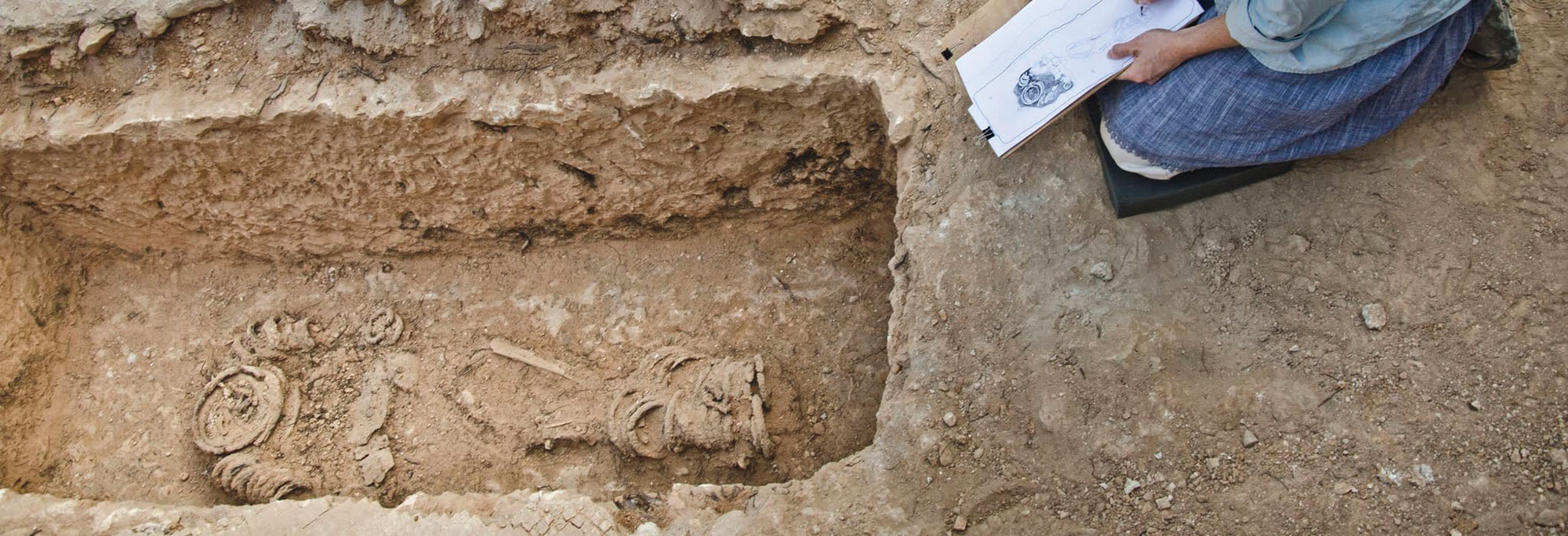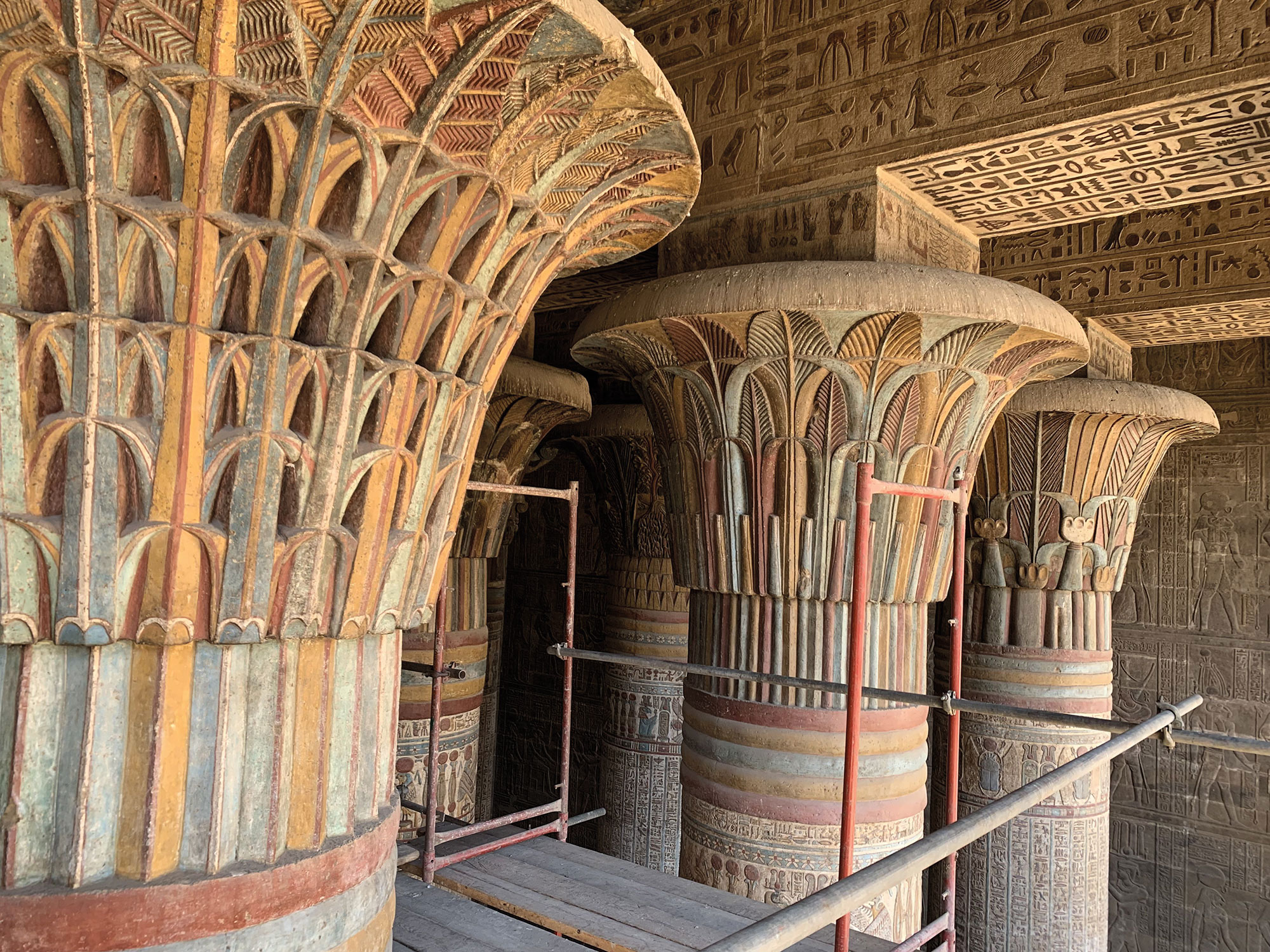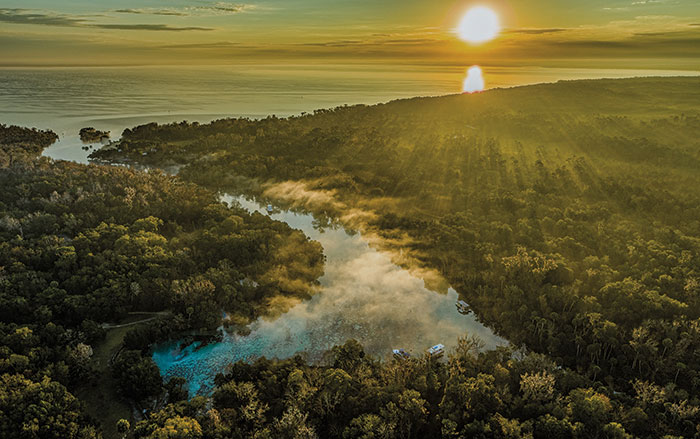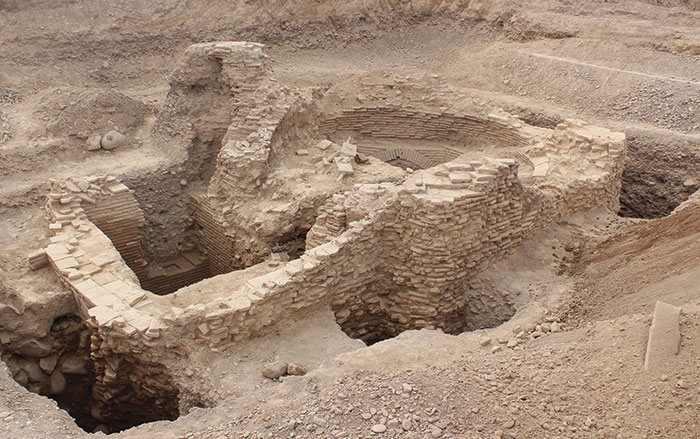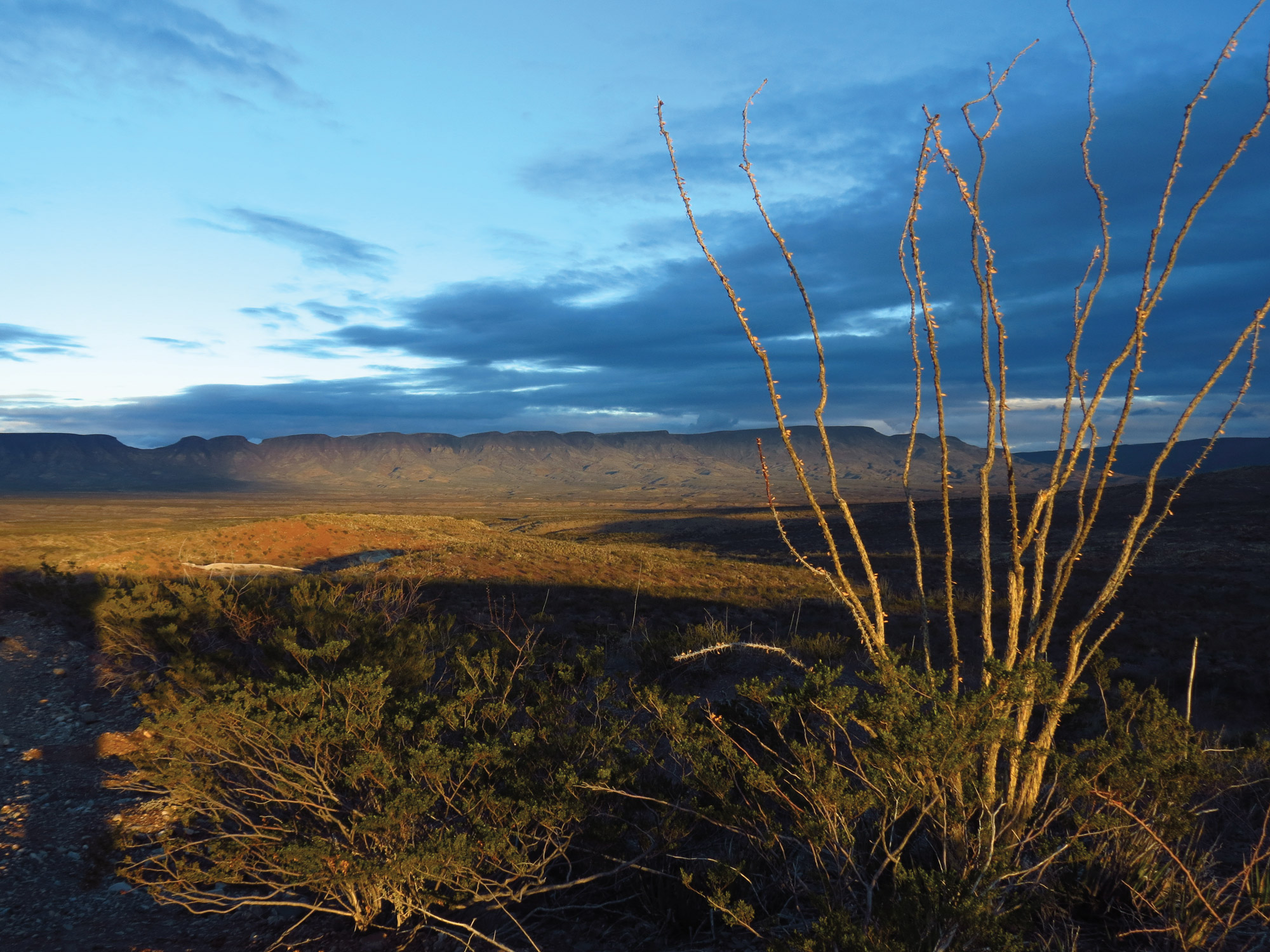HAIFA, ISRAEL—According to a PhysOrg report, a team excavating at the coastal site of Tel Shikmona in northern Israel has uncovered evidence for the ancient production of purple dye on an industrial scale. Beginning around 1000 b.c., Iron Age people living at the site used 100-gallon ceramic vats to process the mucus of sea snails into purple pigment that they then bonded to textiles. Remains of the vats, as well as stone tools used to process textiles, were found covered with purple dye residue. The team also unearthed some 400 Hexaplex trunculus shells, the sea snail used to produce the dye, which was known as Tyrian purple. Read the original scholarly article about this research in PLOS One. To read in-depth about evidence for the dye industry at Tel Shikmona, go to “The Price of Purple.”




